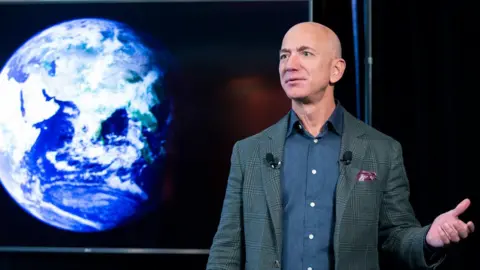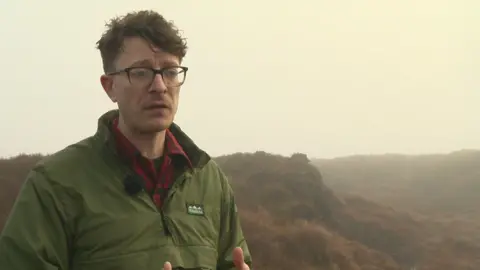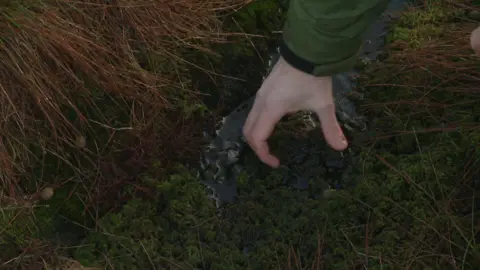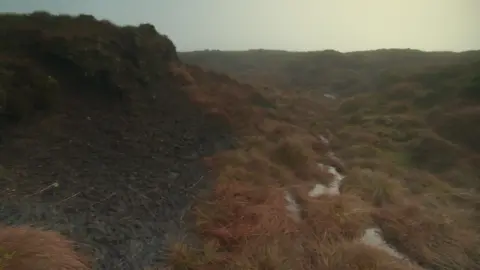Amazon boss invests in uni's 'super moss' study
 EPA
EPAAmazon founder Jeff Bezos is backing a pioneering Manchester project involving a "super species" of moss that researchers say could be the answer in the fight against climate change.
Sphagnum moss, which occurs in peatlands across the UK, is "key" to stemming the impact of global warming, according to Dr Jonathan Ritson, from the University of Manchester.
The moss captures carbon and reduces methane emissions but human activities have led to its decline, including across the nearby Peak District.
Dr Ritson's team is aiming to reverse the decline and funding from California's Silicon Valley could now help make it happen.
The team has been awarded the Bezos Earth Fund Greenhouse Gas Removal Ideation Prize, established by Bezos.

The boost will help Dr Ritson and his team research the best ways of restoring sphagnum moss across not just the UK but wider northern Europe.
"Manchester has been building up its reputation as a global hub for peatland research and it's really great to have that recognised," the doctor said.
But what exactly is sphagnum moss and why is it important?
Sphagnum moss - what is it?

Sphagnum moss is found along the ground across marshes, heaths and moors.
There are over 30 sphagnum species ranging in colour from red and pink to orange and green.
The plants are very small but grow closely together forming spongy carpets, sometimes growing to form large mounds.
They play a role in the creation of peat bogs and, by storing water in their spongy forms, they prevent the decay of dead plant material and eventually form peat.
Peatlands are vital ecosystems that store more carbon per hectare than tropical rainforests.
Central to this is sphagnum moss, which also supports bacteria that consumes methane - a potent greenhouse gas.
Why is it important?

Human activities have led to the decline of sphagnum in many peatlands, with damage to the Peak District Moors playing out ever since the dawn of the industrial revolution.
Dr Ritson continued: "We are basically downwind of Manchester, the heart of the industrial revolution.
"There was so much acid rain from all the coal being burnt that essentially the sphagnum and a lot of other vegetation just died off completely."
He added that "wet, healthy" bogs are good for carbon sequestration - the process of chemically isolating carbon - but wet bogs also release a lot of methane.
The team's project is aiming to use a variation of sphagnum mosses as a natural filter to trap the methane and stop it being released.
This will be done through lab testing and planting the moss out in the field.
By identifying and cultivating "super" strains of sphagnum moss, the team hope they can create a natural and sustainable way to capture the methane and gradually restore the landscape.
Listen to the best of BBC Radio Manchester on Sounds and follow BBC Manchester on Facebook, X, and Instagram and watch BBC North West Tonight on BBC iPlayer.
